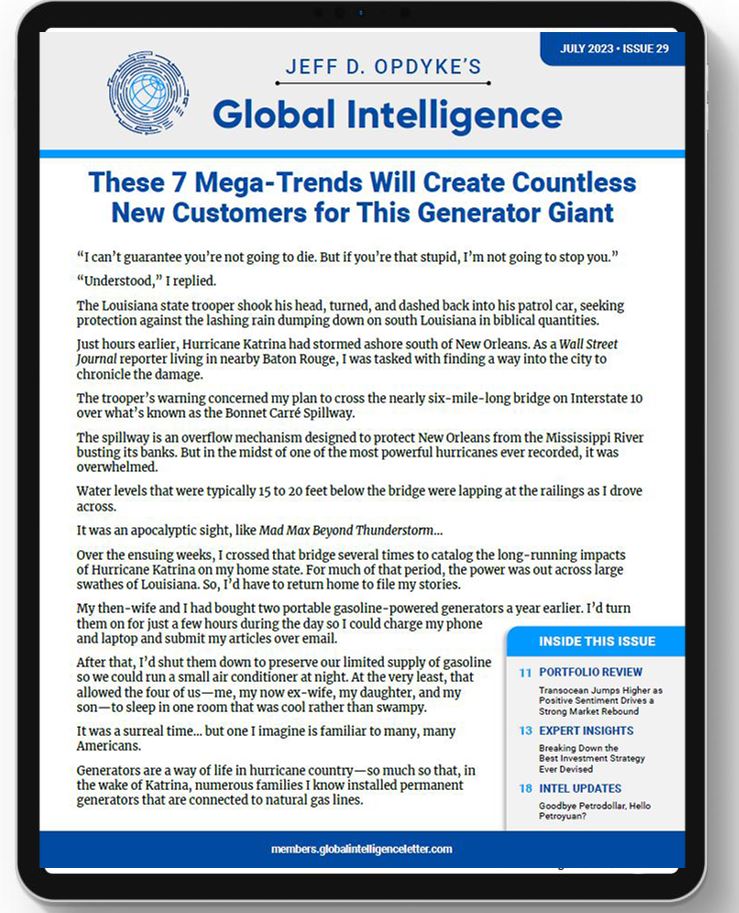This month we’re buying America’s largest generator company—Generac Holdings (GNRC).
Last year, the typical American had to endure more than seven hours of blackouts across the year, according to the U.S. Energy Information Administration. That’s more than double the rate of a decade ago, and among the highest level of power outages anywhere in the developed world.
And the thing is, the situation isn’t going to improve anytime soon. If anything, it will worsen from here…
Electric power companies—the utilities that provide electricity to our homes and businesses—have not been investing as much as necessary to upgrade America’s existing utility infrastructure. In fact, much of America’s utility infrastructure is now approaching the end of its useful lifespan.
Americans face the ever-growing likelihood that they’re going spend longer and longer hours in the dark… which means they will increasingly need to turn to America’s largest generator company.
Get all the details in your July issue.
Meanwhile, in our Expert Insights story this month, Kim Iskyan is back… and he’s hacking Warren Buffett.
Where many other hedge fund managers seem to spend their time throwing darts and occasionally getting lucky, Buffett’s unique history of success over nearly 50 years would seem to indicate that’s he more like a sniper picking off the perfect investments nearly every time.
How is such a track record even possible?
As Kim notes, Buffett seeks out what he calls “inevitables”—capital-efficient companies “whose competitive advantages are so clear and entrenched it’s hard to imagine even a well-financed competitor making much of a dent in their margins.”
In his story, Kim lays out the “five green flags” that define an “inevitable” company… so you can apply them to your investing.
Finally, in this month’s Intel Updates, pay attention to items one and two. One touches on India using the Chinese yuan to pay for Russian oil … while the other focuses on Australia’s plan to reduce energy prices in the short term that will, instead, have very painful long-term costs.
I point out these two items because they speak to much larger issues tied to the U.S. dollar and the global energy market. They basically underscore that challenges we face over the remainder of this decade.

